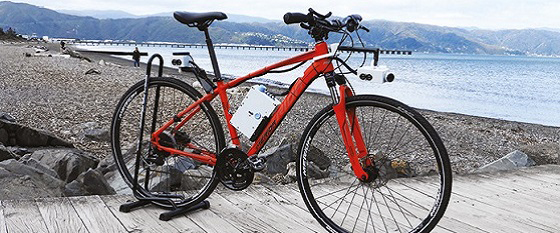WSP's Bart the Bike
At WSP’s Research & Innovation centre in Petone, a world-first instrumented bicycle is helping provide a better understanding of the factors affecting cyclists’ experiences on New Zealand’s roads.
A team of behavioural scientists, sustainable transport experts and instrumentation engineers have undertaken innovative research for Waka Kotahi – the NZ Transport Agency, providing them with a solid scientific basis to inform their goal of improving levels of cycling throughout the country.
Jared Thomas is a leading expert in the research and design of spaces for vulnerable road users. He says that although it’s currently the most repressed mode of transport, there is potential for cycling to become the largest demand growth area.
Figures support this. The Ministry of Transport Household Travel Survey shows that although 31% of New Zealanders aged over 15 have cycled in the past year, less than 2% of trips are made by bike. A key target group for improving uptake is the ‘interested but concerned’ 20-30% of people who would like to cycle more, but are discouraged by safety concerns.
Jared’s research confirms that their concerns are justified in many cases, with most riders experiencing an uncomfortable interaction with a motor vehicle on their ride – typically one every 22 minutes.
"These incidents are from a vehicle overtaking too closely, but can also be from other cyclists overtaking closely. Another common example is a vehicle cutting them off at intersections or roundabouts, such as turning left in front of them or suddenly pulling out.”
Thoughtful, connected infrastructure design has a large part to play, particularly for less experienced cyclists, explains Jared; one bad element of the route will stop a rider from completing the whole journey.
Tension between cyclists and motorists is also an issue, but Jared acknowledges that while much is made of the animosity between drivers and cyclists, WSP’s ‘passing gap’ research demonstrates that most drivers do give cyclists an appropriate amount of space.
Further information
Find out more about WSP Research and Laboratory Services.
Date posted: 30 October 2020

